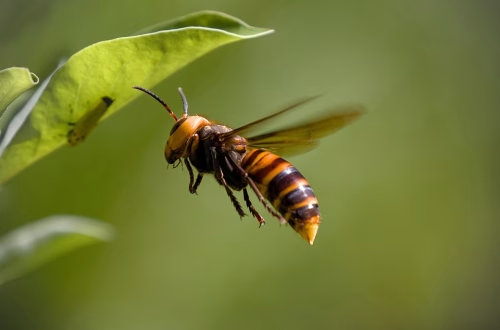Article Summary
Insect infestations pose significant health, safety, and financial risks to homeowners and businesses alike. This article delves into the specifics of effective insect control, addressing the nuances of infestation criteria, treatment strategies, and regulatory implications. Readers will gain actionable insights into identifying, treating, and preventing insect infestations, ensuring a safer, healthier environment. Whether you’re dealing with ants, cockroaches, or termites, understanding these critical aspects can save you from costly damages and health hazards.
What This Means for You
- **Immediate Action:** If you suspect an insect infestation, immediately conduct a thorough inspection of your property, focusing on areas like kitchens, basements, and crawl spaces. Early detection is crucial for effective control.
- **Health and Safety Risks:** Untreated insect infestations can lead to severe health issues, including allergic reactions, respiratory problems, and diseases like salmonellosis from cockroaches or Lyme disease from ticks. Immediate action is essential to mitigate these risks.
- **Protecting Your Property:** Insects can cause extensive property damage, from termites destroying wooden structures to carpenter ants weakening building foundations. Effective control measures protect your property and save you from costly repairs.
- **Long-Term Strategy:** Implement Integrated Pest Management (IPM) practices, including regular inspections, sealing entry points, and using eco-friendly treatments to prevent future infestations and maintain a pest-free environment.
Buzz Off! Effective Strategies for Natural Insect Control
What is Insect Control?
Insect control refers to the management and regulation of insect populations to mitigate their impact on human health, property, and the environment. This involves identifying the specific pest species, understanding their biology, and implementing targeted strategies to prevent, monitor, and treat infestations.
General Principles of Pest Control
Integrated Pest Management (IPM) is a comprehensive approach emphasizing prevention, monitoring, and targeted treatment. IPM focuses on understanding the pest’s life cycle, identifying conducive conditions, and using a combination of strategies such as physical barriers, biological controls, and chemical treatments only when necessary.
DIY vs. Professional Pest Control
While DIY methods can be effective for minor infestations, they often fail to address the root cause of the problem. Professional pest control services offer specialized expertise, advanced treatment methods, and follow-up inspections to ensure long-term effectiveness. For severe infestations or recurring problems, professional intervention is strongly recommended.
Types of Infestations Common in Residential Properties
Ant Invasions
Ants are common household pests that can contaminate food and damage structures. Signs of infestation include visible trails, nests, and food sources. Immediate actions include sealing entry points, removing food sources, and using bait stations or insecticides. For carpenter ants, which can cause structural damage, professional treatment is often necessary.
Cockroach Infestations
Cockroaches are notorious for spreading diseases and triggering allergies. Signs of infestation include droppings, egg cases, and a musty odor. Homeowners should clean thoroughly, seal cracks, and use baits or traps. Professional services are recommended for severe infestations to ensure complete eradication.
Termite Damage
Termites can cause extensive damage to wooden structures, often unnoticed until significant harm has occurred. Signs of infestation include mud tubes, discarded wings, and hollow-sounding wood. Homeowners should reduce moisture levels, repair wood damage, and conduct regular inspections. Professional termite treatments, such as soil treatments or bait systems, are essential for effective control.
Key Commercial Insect Control Challenges and Business Provisions
Businesses face unique challenges, including food safety concerns, reputational damage, and regulatory compliance. Regular inspections, discreet service, and adherence to health and safety regulations are critical. Commercial pest control programs often include monitoring, preventive measures, and emergency response plans to maintain a pest-free environment and ensure compliance with industry standards.
Identification and Inspection Requirements
Accurate identification is crucial for effective treatment. Common signs include droppings, damage, and unusual activity. Inspections should focus on potential hiding spots like cracks, crevices, and moisture-prone areas. Misidentification can lead to ineffective treatments, highlighting the importance of professional assessment.
The Professional Pest Control Process
- Initial Inspection: A thorough assessment to identify the pest species, infestation extent, and conducive conditions.
- Treatment Plan Development: Customized strategies based on the inspection findings, including preventive measures and targeted treatments.
- Application Methods: Use of appropriate techniques such as baiting, trapping, or chemical treatments, applied safely and effectively.
- Follow-Up Visits: Regular inspections to monitor the situation and make necessary adjustments to the treatment plan.
- Post-Treatment Recommendations: Guidance on preventive measures to avoid future infestations, such as sealing entry points and maintaining cleanliness.
Choosing a Pest Control Professional
Selecting a licensed pest control technician or company is critical. Key factors include specialized experience with the specific pest, knowledge of local regulations, integrated pest management practices, service guarantees, and professional certifications. A reputable provider ensures effective, long-term solutions tailored to the infestation.
Insect Control-Specific Regulations/Best Practices/Examples
Under the Environmental Protection Agency (EPA) guidelines, the use of certain pesticides for insect control is restricted to minimize health and environmental risks. For example, the Federal Insecticide, Fungicide, and Rodenticide Act (FIFRA) regulates pesticide use, ensuring safety and efficacy. Best practices include using EPA-registered products, following label instructions, and minimizing chemical exposure.
People Also Ask About
- How do I know if I have a termite infestation? Look for mud tubes, discarded wings, and hollow-sounding wood.
- What are the health risks of cockroaches? Cockroaches can spread diseases like salmonellosis and trigger allergies.
- Can I treat a severe ant infestation myself? For carpenter ants or large infestations, professional treatment is recommended.
- How often should I have a pest inspection? At least annually, or more frequently if you live in a high-risk area.
- What are eco-friendly pest control methods? Methods include using bait stations, biological controls, and sealing entry points.
Other Resources
For more information, visit the official Environmental Protection Agency (EPA) website or consult the National Pest Management Association for authoritative guidance on pest control practices.
Expert Opinion
Effective insect control is crucial for maintaining a healthy and safe environment. Proactive measures, such as regular inspections and integrated pest management, can prevent infestations before they become severe. Professional expertise ensures accurate identification and targeted treatments, minimizing health risks and property damage. Eco-friendly practices not only protect the environment but also offer long-term solutions. Understanding the dynamics of pest activity and staying informed about regulatory requirements are essential for effective pest management. A pest-free environment enhances quality of life and protects valuable investments in both residential and commercial properties.
Related Key Terms
- Effective termite control strategies
- Professional cockroach extermination services
- Integrated pest management for ants
- Eco-friendly insect control methods
- Regulations for pesticide use in pest control
- Health risks of insect infestations
- Commercial pest control for businesses
*Featured image sourced by Pixabay.com




